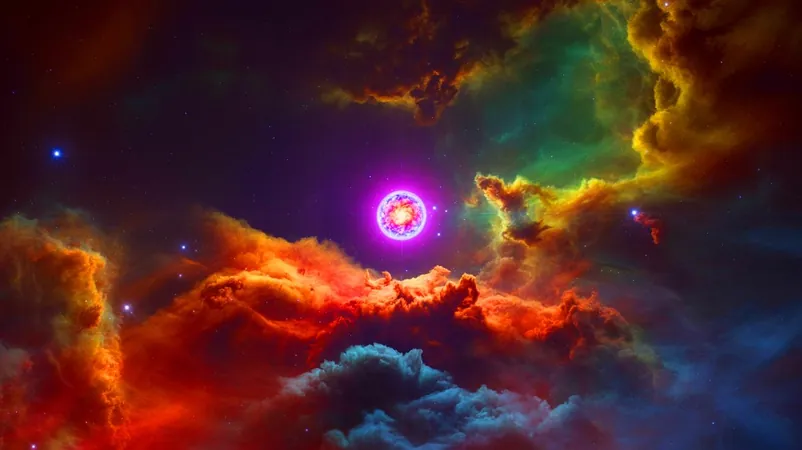
Earth's Hidden Companion: Meet the Quasi-Moon That's Been Orbiting Us for Decades!
2025-09-09
Author: Kai
Unbelievable but true—scientists have just unveiled a hidden celestial companion that's been quietly trailing Earth for the last 60 years! This newly identified quasi-moon, dubbed 2025 PN7, has been lurking in the shadows of our orbit, and there's a good chance it will remain with us for several more decades.
The big reveal came when astronomers at Hawaii's Pan-STARRS observatory spotted 2025 PN7 on August 2. A subsequent publication in the Research Notes of the American Astronomical Society outlined the groundbreaking discovery, which urged scientists to dig into archival images. Astonishingly, they found evidence of this near-Earth asteroid stretching back to 2014!
According to the gathered data, 2025 PN7 has been cruising through a stable orbit for 60 years and will continue on this path for another 60 before it inevitably drifts away from our orbit around the Sun.
Say Hello to 2025 PN7!
Measuring approximately 62 feet (19 meters) in width, 2025 PN7 resides anywhere from 2.8 million to 37.2 million miles away from our planet! Its current residing place? The constellation of Piscis Austrinus, visible in the Southern Hemisphere sky. This space rock has now earned its place in the exclusive club of near-Earth asteroids.
While Earth boasts just one natural satellite—our beloved Moon—quasi-satellites like 2025 PN7 are unique visitors that share our pathway through space due to gravitational influence. Unlike true moons, they don’t get ensnared by Earth’s gravity; they simply tag along as we make our journey around the Sun. Think of them as temporary travel buddies instead of actual satellites!
What’s the Difference? Quasi-Moons vs. Mini-Moons!
It's essential to differentiate between quasi-moons and mini-moons. Mini-moons get briefly captured by Earth’s gravity, floating around for a few short weeks or months before breaking free. For instance, a small near-Earth asteroid acted as our mini-moon for a thrilling two-month period last year!
Mini-moons are seemingly more common, while quasi-moons like the famed Kamoʻoalewa (or 2016 HO3) stand out. Discovered on April 27, 2016, the impressive Kamoʻoalewa measures between 131 and 328 feet (40 to 100 meters). Excitingly, China's Tianwen-2 mission, which launched in May, aims to rendezvous with Kamoʻoalewa and collect samples to bring back to Earth in 2027—promising new insights into the origins of our solar system!
So, next time you gaze up at the stars, remember: there’s more to our cosmic neighborhood than meets the eye! With ongoing discoveries like 2025 PN7, who knows what other secrets our universe still holds!


 Brasil (PT)
Brasil (PT)
 Canada (EN)
Canada (EN)
 Chile (ES)
Chile (ES)
 Česko (CS)
Česko (CS)
 대한민국 (KO)
대한민국 (KO)
 España (ES)
España (ES)
 France (FR)
France (FR)
 Hong Kong (EN)
Hong Kong (EN)
 Italia (IT)
Italia (IT)
 日本 (JA)
日本 (JA)
 Magyarország (HU)
Magyarország (HU)
 Norge (NO)
Norge (NO)
 Polska (PL)
Polska (PL)
 Schweiz (DE)
Schweiz (DE)
 Singapore (EN)
Singapore (EN)
 Sverige (SV)
Sverige (SV)
 Suomi (FI)
Suomi (FI)
 Türkiye (TR)
Türkiye (TR)
 الإمارات العربية المتحدة (AR)
الإمارات العربية المتحدة (AR)